Located at the mouth of the River Liffey, Dublin is the capital and the largest city in Ireland. This historic city dates back to the 7th century with the first establishment of Celtic-speaking people and was later expanded during the Viking settlement and Norman invasion.
Today, this vibrant city of Dublin is known for its charming cobblestone streets, gorgeous cathedrals, beautiful parks, hidden gems, wonderful live music, delicious Irish food, and amazing culture,
Getting There
Dublin Airport (Airport Code: DUB) serves the capital city and has flights flying to many European destinations as well as countries from the Middle East and North America.
Once you arrive at the terminal, there are several ways to get into the city. The most affordable way is by Airlink Express routes 747 and 757, which allows you to reach the city center and some suburbs. Those bus services come every 15-20 minutes and operate from 4.50 am to 11.20 pm. There is no rail connection between the city and the airport.
You can also take a taxi from the airport and the driver can take you directly to your hotel or Airbnb home. The fare can be quite expensive, but it is most convenient since it gets you right to where you stay.
Getting Around
The best way to explore Dublin city is on foot since most tourist attractions are within walking distance. There are trams called LUAS that connects the city center with its surrounding suburbs in the south and south-west city.
You also can purchase the City Sightseeing Hop-on Hop-off Bus ticket to get directly to the main tourist sites. The ticket allows you to use up to 24 hours and the package included a walking tour.
Renting a car is highly not recommended to get around the city centerr because the parking areas are limited and expensive.
Interesting Places to Visit for 4 Days in Dublin
Dublin is one of the most fascinating European cities where the old meets the modern city and culture. It is best to spend 4 days and 5 nights here to explore the capital city, as well as take a day trip to the Cliff of Moher. So, I have gathered a list of fun activities to do during your visit to Dublin.
Indulge the Irish Dry Stout
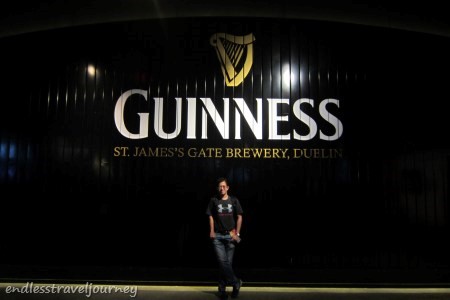
Ireland is home to the famous Irish dry stout called Guinness. Situated at the heart of St James’s Gate, the founder Arthur Guinness opened his brewery in 1759.
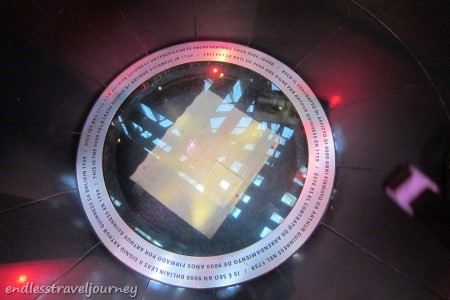
As you enter the storehouse, there is the now-famous 9,000 years lease enclosed with a glass on the floor that was signed by Arthur himself. This existing visitor center was restructured from a former fermentation plant to dedicate the history of the company.
And believe it or not, this seven floors building shaped around a giant pint glass atrium can fill up to 14.3 million pints of Guinness!
Take a self-guided tour to learn how the famous brew is produce and later transport them around the world by ship. You can visit the Tasting room to try various types of breweries.
At the end of the tour, visit the Gravity Bar at the highest point of the building to enjoy a pint of complimentary Guinness beer. The bar offers a 360-degree panoramic view of Dublin city.
Opening hours: Click here for more details
Entrance fee: Adults: €26/ Children: €10
Explore Trinity College

This prestige Trinity College is the country’s oldest surviving university that was founded in 1592 by Queen Elizabeth I. The campus is one of the seven ancient universities of Britain and Ireland and also among the most elite in Europe due to its long history.
Join the guided tour host by the college students and learn the history behind each building and statue on the campus ground. You get to visit the famous Book of Kells and the Old Library with stunning architecture (Read more at Trinty College Tours and Stay for the full story).
Entrance fee: Click here for more details
Roam around O’ Connell Street

O’ Connell Street was named after Daniel O’Connell, a nationalist leader of the early 19th century. This street has often been the center stage in Irish history, attracting the city’s most prominent monuments and public art through the centuries.
Some notable historic events were held here, including the 1913 Dublin Lockout gatherings, the 1916 Easter Rising, the 1922 Irish Civil War, the destruction of the Nelson Pillar in 1966, and many public celebrations, protests, and demonstrations until the present day.
The highlights of O’ Connell Street are the Spire of Dublin, the world’s tallest public art and GPO Witness Center.

Visit Dublin Castle
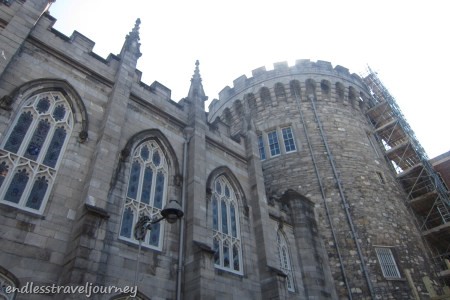
Joined a guided tour as they take you through this historic Irish government complex, the Royal Chapel, and uncover the underground passage, once belong to the settlement of the Vikings. In 1204, King John of England ordered the construction of the castle and made it the seat of colonial rule, the center of military and political power, and the glittering social stage for Ireland’s ruling classes for over 800 years.
In January 1922, six years after the Easter Rising and the end of Irish War of Independence (1919-1921), Dublin Castle was handed over to Michael Collins, the first leader of the new Irish Free State.
Visit Christ Church Cathedral
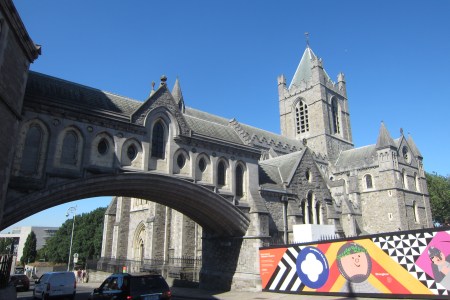
This historical Christ Church Cathedral was established as a small wooden temple in 1038 by the Vikings and was rebuilt in stone in 1172. However, it took nearly a century to complete and an extensive restoration was done in the 1870s. The present building is an intriguing blend of original 12th and 13th century material alongside exacting recreated Victorian Gothic features.
Step right below the church to visit the largest arched medieval crypt in Britain and Ireland that dates from the 12th century. It is the oldest working structure in the city which houses several exhibits.
The chapel to St Laurence O’Toole features a small shrine where the saint’s heart is kept.
Opening hours: Monday to Saturday from 9.30 am to 6 pm and Sunday from 12.30 pm to 2.30 pm and 4.30 pm to 6.30 pm
Entrance fee: Adults: €10/ Children: €3.50 (Free entry with Dublin Pass)
Admire St Patrick Church
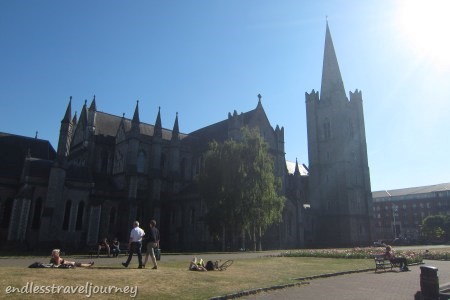
Sit back and relax outside Saint Patrick and view the spectacular old church. Built to honor of Ireland’s patron saint, it stands adjacent to the famous well where tradition has it Saint Patrick baptized converts on his visit to Dublin.
This church was granted collegiate status in 1191 and raised to cathedral status in 1224. Today, this cathedral is a church of the Anglican communion.
Experience Airbnb-Hosted City Tour

Take a 3-hour city tour led by Cristy, an Airbnb host as she shares a brief history and takes me to some hidden gems of Dublin apart from the popular tourist destinations.
We visit Trinity College, St Stephens Gardens, her own neighborhood, Dublin Castle, a site of Vikings settlement behind Christ Church Cathedral (which I’m not aware of this when visited the church), Temple Bar, and beautiful street art.

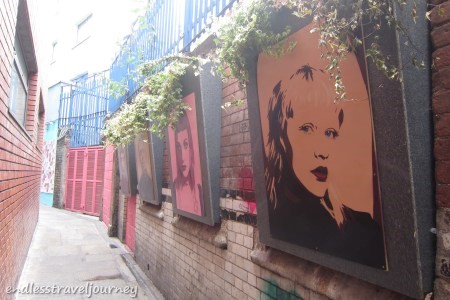
Visit the Garden of Remembrance
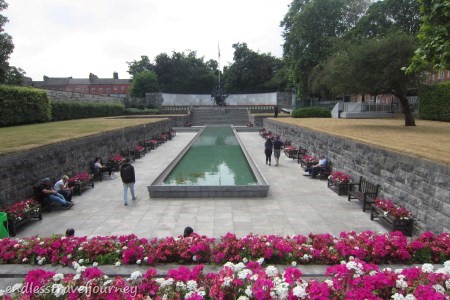
The Garden of Remembrance was built to dedicate to the memory of all those who sacrifice their lives in the cause of Irish Freedom. Its symbolic design was created by architect Daithi Hanly in 1946 and contains a large cross-shaped pool, symbolic of the dead with a tiled mosaic pattern as its base.
Important objects from the history of prehistoric and medieval Ireland were woven into the structure of the Garden. While the shape of the Brian Boru harp, the Loughnashade trumpet, and the Ballinderry sword can be seen in the railings. The Children of Lir unifies the theme.
Visit the Dublin Writers Museum
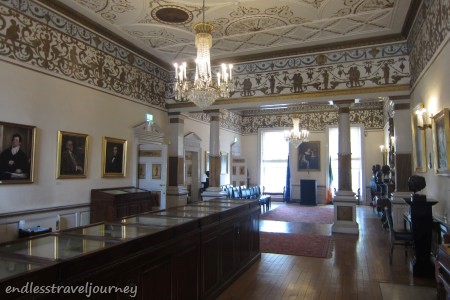
This museum was established to promote interest through its collection, displays, and activities in Irish literature as a whole and in the lives and works of Irish writers. It provides a link with living writers and the international literary heritage left in their past like James Joyce, George Bernard Shaw, William Bulter Yeats, and Patrick Pearse. It brings to life the writers and their times with photographs and portraits, letters, first editions, and evocative personal possessions.
Opening hours: Monday to Saturday from 10 am to 5 pm and Sunday from 11 am to 5 pm
Entrance fee: Adults: €7.50/ Children: €4.50
Explore Smithfield
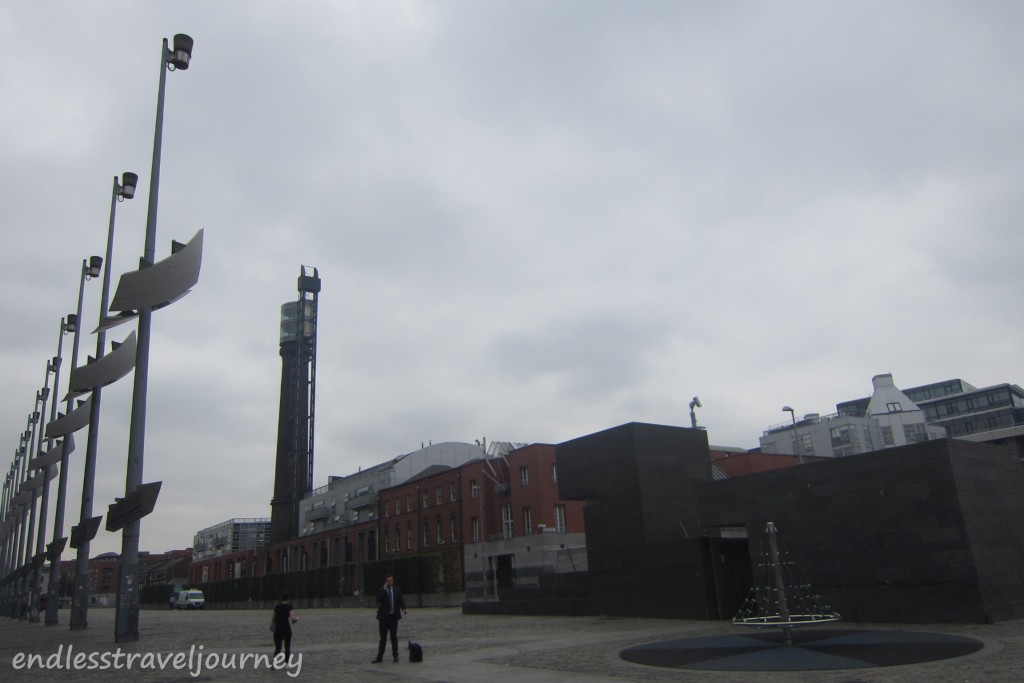
Smithfield was a marketplace back in the mid-17th century and now home to Dublin City’s fruit, vegetable, and flower market. In 1964, Richard Burton and Elizabeth Taylor spent time here, as Burton worked on the film set based on a novel named “The Spy Who Came in from The Cold“.
Smithfield also featured as the Berlin Wall crossing point- Checkpoint Charlie in the movie. The main attraction here is the Jameson Distillery at Bow Street and the Observation Tower.
Hang out at Temple Bar

Stroll the streets and eat at one of Irish restaurants or bars. I have an early dinner at the Old Mill and try out the Irish beef stew. The atmosphere inside is simply cozy and the food was superb.
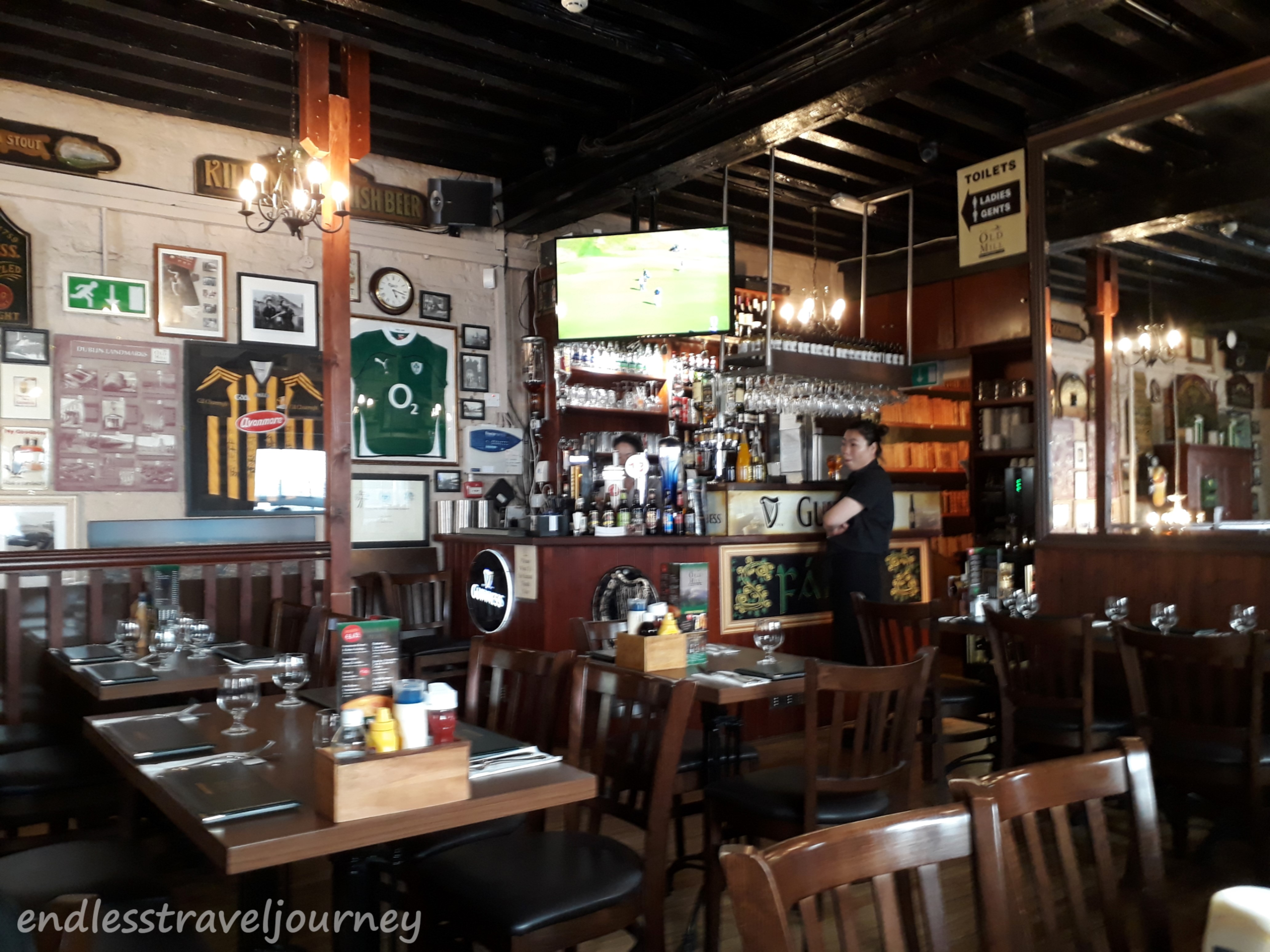

After dinner, I wander around the lively local street market that is so happening even when the night is still young. Locals and tourists flocked in to enjoy the nightlife. There are street performances along this pedestrian street and tourists can sit along the steps to watch the shows.
Cross the Ha’Penny Bridge
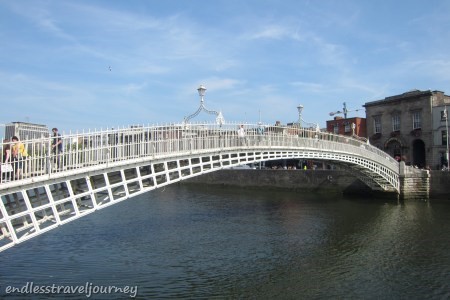
The pedestrianised Ha’ Penny Bridge got its name because once upon a time one was to pay half a penny to cross the murky waters of River Liffey. The cast iron bridge was created in Shropshire, England and built here in May 1816.
If you are visiting Dublin city, what are the chances of crossing over this structure?
Partake in the Irish Pub Crawl Tour
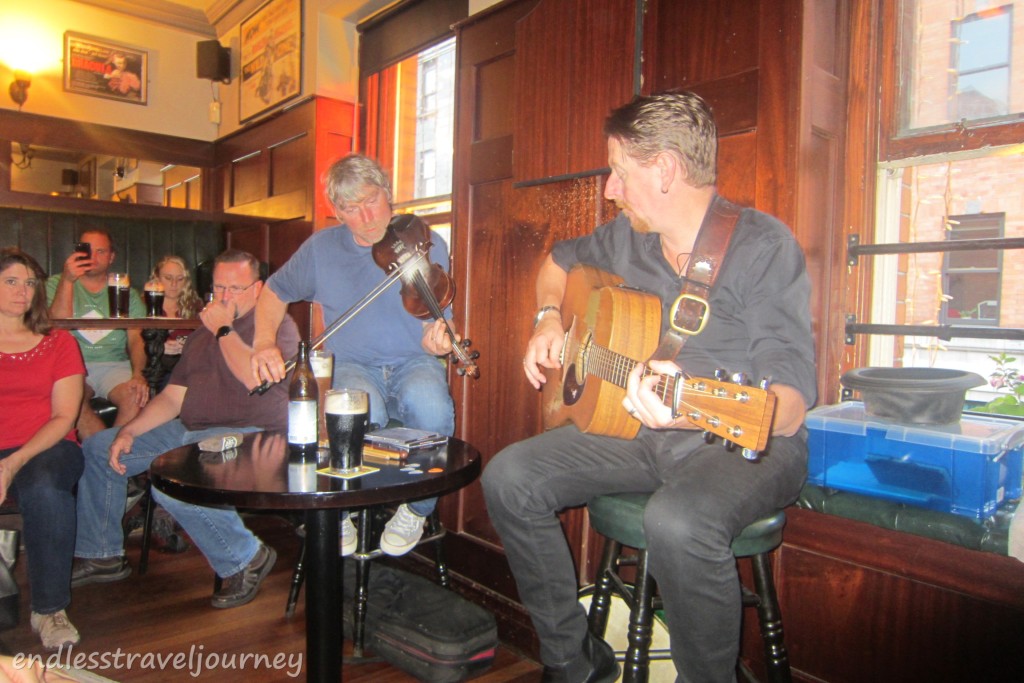
An Irish trip will be incomplete without having a fun night out with an Irish pub crawl.
Join the local hosts, Anthony and Dave, as they take you on a traditional Irish Musical Pub Crawl tour at Olive St John Gogarty’s and Ha’Pemmy Bridge Inn in Temple Bar and Brannigan’s at Upper O’Connell Street. Learn the history of Irish music, music instruments, and how the music can relate to the local community and culture.
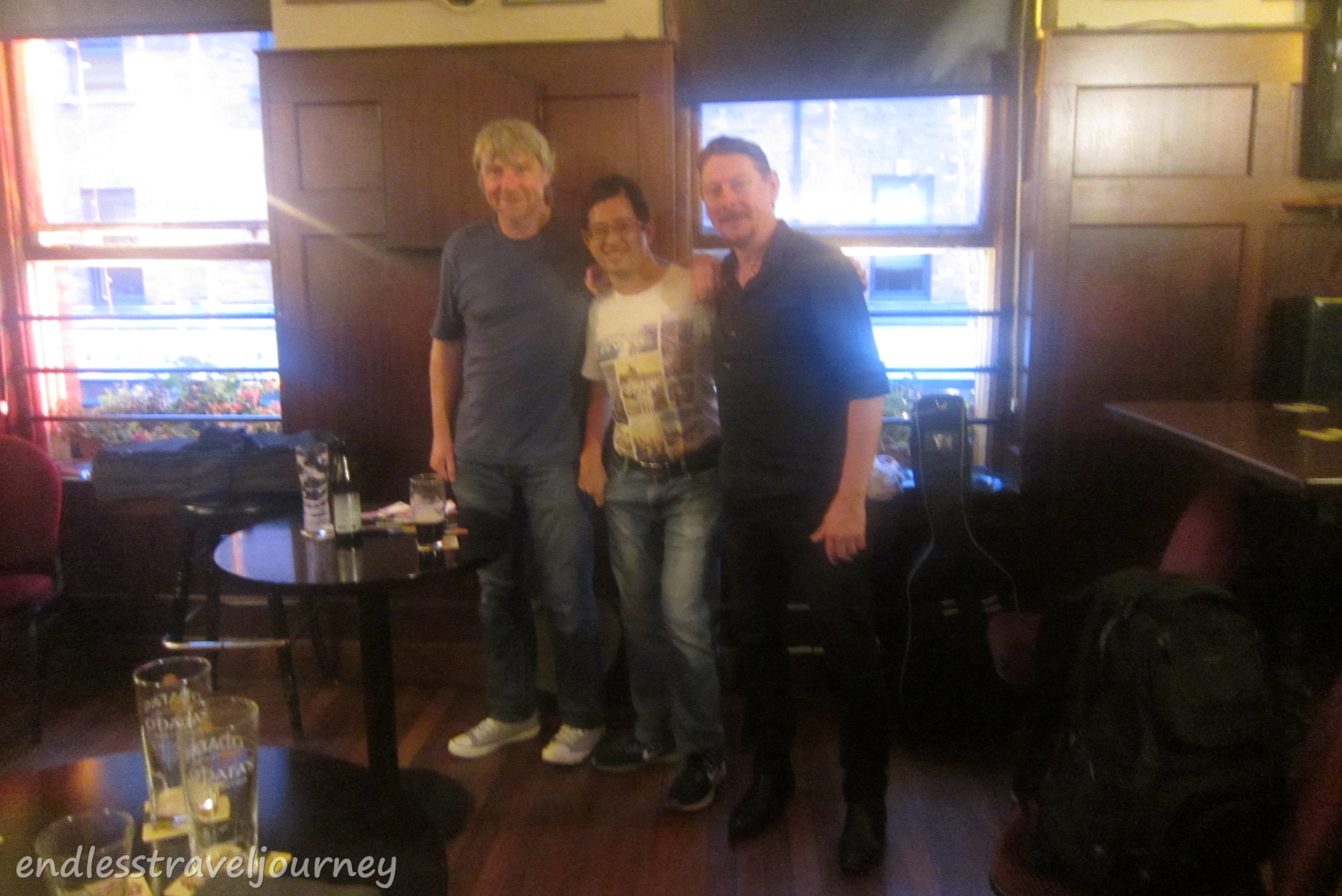
Wander about Phoenix Park
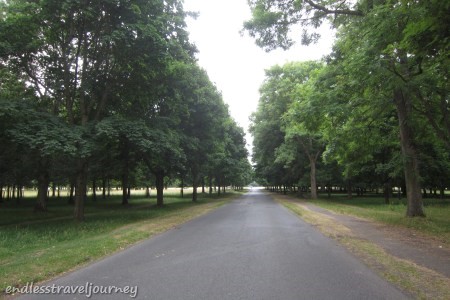
Take a morning walk at one of the largest enclosed recreational spaces within any European capital city. Phoenix Park stretches as far as 11 kilometers in length, larger than all of London’s city parks ever combined together and more than twice the size of New York’s Central Park.
Phoenix Park was initially a royal deer park in 1662 and first opened to the public in 1747. 93% of the park consists of old grasslands, woodlands and rare examples of wetlands that covered 351 different plant species.
You will find different mammal and bird species living around the park. One of the most common creatures is the wild fallow deer. 550 deers had roamed the park for over 350 years. Unfortunately, I did not encounter any of them during my 2-hours walk here.
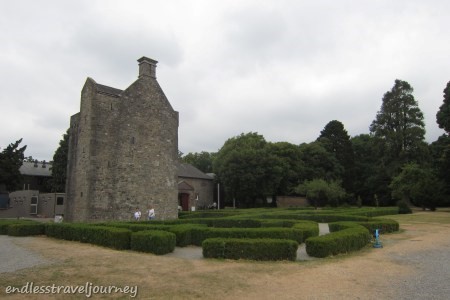
Ashtown Demesne is a good place to relax after a long walk at the park. You can grab a bite at the Phoenix Cafe and have picnic near the playground, the Victorian Kitchen Walled Garden, woodland walks, and the medieval Ashton Castle. Next door is the Phoenix Park Visitor Center.

Aras an Uachtarain is the residence of the President of Ireland that dates back to 1750. It served as the residence of the British Viceroys from 1782 to 1922.
The United States Ambassador’s residence also within the park ground was built in 1774 as the Park Bailiff’s lodge and later converted into the Chief Secretary’s Lodge
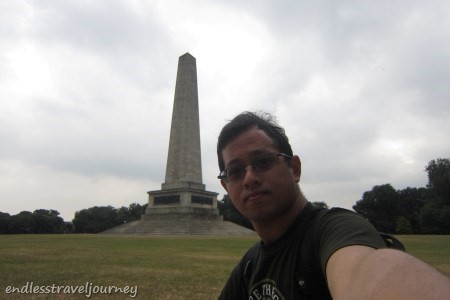
The Wellington Testimonial was designed by Robert Smirke as a testimonial to Arthur Wellesley, Duke of Wellington, who is reputed to have been born in Dublin. Standing at 62 meters tall, the monument is the tallest obelisk in Europe and was completed in 1861.
There are four bronze plaques cast from cannons captured at Waterloo- three of which have pictorial presentations of his career while the fourth has an inscription at the base of the obelisk.
Enjoy the views of River Liffey
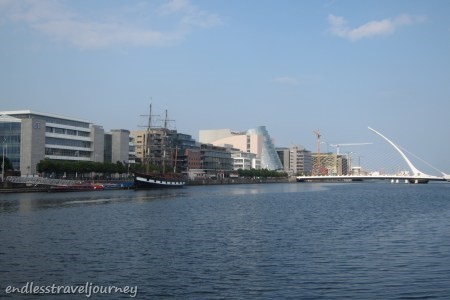
Walk across Sean O’Casey Bridge and Samuel Beckett Bridge to admire the wonderful views of River Liffey and the architectural buildings by the docklands.
The main attractions on both sides of the river include Jeanie Johnston Tall Ship, the EPIC Emigration Museum, The Custom House, and the Convention Center Dublin.
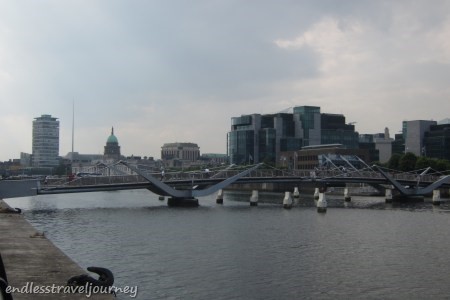
Visit the EPIC and the Great Famine
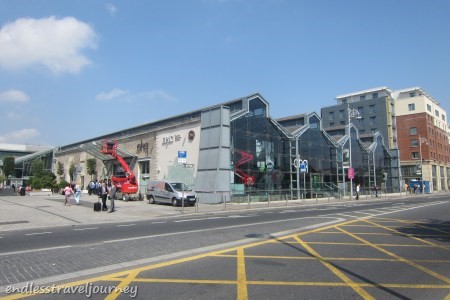
Experience and learn about the unforgettable stories of those who migrate from the island of Ireland and how they influenced and shaped the world. They had left for the betterment of lives in America, Canada, Mexico, and other parts of Europe.
The museum embraces the past and the future with 1,500 years of Irish history and culture with the state-of-the-art interactive galleries, touch screens, motion sensor quizzes, audios and videos throughout the museum.

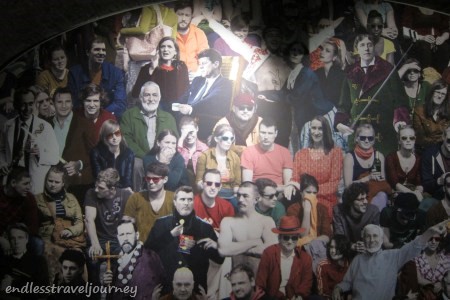
One of the friendly staff take me around on one part of the exhibits and share some details of early immigrants. It comes to my surprises that some of the Irish immigrants are the descendants of U.S. former presidents, celebrities, singers, and sports stars. This includes former president J.F. Kennedy and Barrack Obama, R&B singer Rihanna, Mariah Carey, and boxer Muhammad Ali.
Visit the Famine Memorial Sculptures

The Famine Memorial Sculptures outside the EPIC Emigration Museum tell the story of the Great Famine, a period of mass starvation, disease, and emigration in Ireland between 1845 and 1849. About one million people had died as the result and another 1 million emigrated from this island that caused its population to drop from 8 million to 6 million people.
Traveling Elsewhere in Ireland?
If you are planning for a long adventure in Ireland, you can check out some of my other posts:
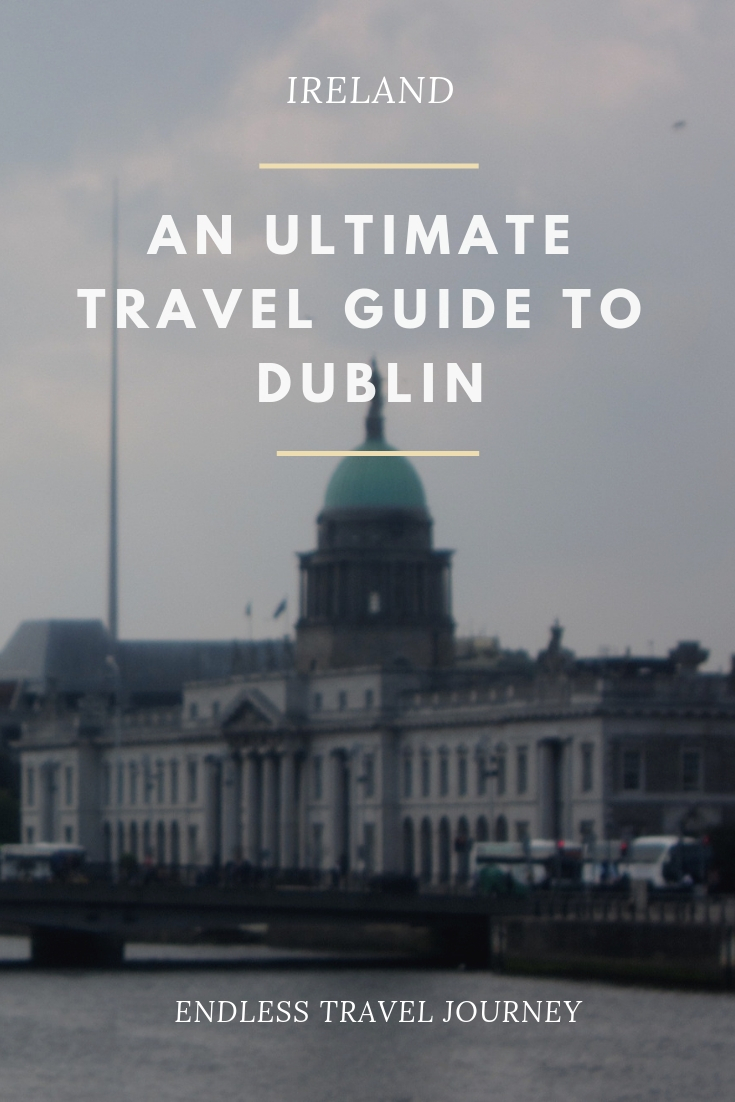










These are such a great info, thanks for sharing it! I would love to go to Dublin someday. And their beef stew looks yummy! 😃
LikeLike
Ireland is lovely! It’s high up on my list. Hope to visit soon.
LikeLike
Tak pernah dengar tentang Dublin. Banyak juga tempat menarik untuk dilawati. Juga tempat bersejarah seperti istana. Paling menarik memorial sculptures di luar muzium tu.
LikeLike
Ireland may not be a popular tourist destination for Malaysia but it is indeed on my bucket list! Thanks for sharing this long list of attractions in Dublin. I’ll KIV it for a future trip!
LikeLike
Wow!!…what a description. The photos are beautiful and it really attracted me to visit this beautiful place.
LikeLike
As a writer myself, I am interested to visit their Writer’s Museum. And read their remarkable pieces.
LikeLike
I haven’t been to Dublin yet. Will pay a visit to there if I got chance.
LikeLike
guinness Storehouse, a must visit for me if I am ever there
LikeLike
Wow Dublin! My dream place to visit!!
Yay.. glcan follow your itinerary now…
LikeLike
Love all the places you visit! Dublin is such a nice country with quiet street and historical buildings design.
LikeLike
This is a wonderful guidelines about Dublin. There are many amazing place for visit. I gather many useful knowledge about Dublin. Thanks 🙂
LikeLike
Love ur blog! Follow ur passion! ❤️
LikeLike